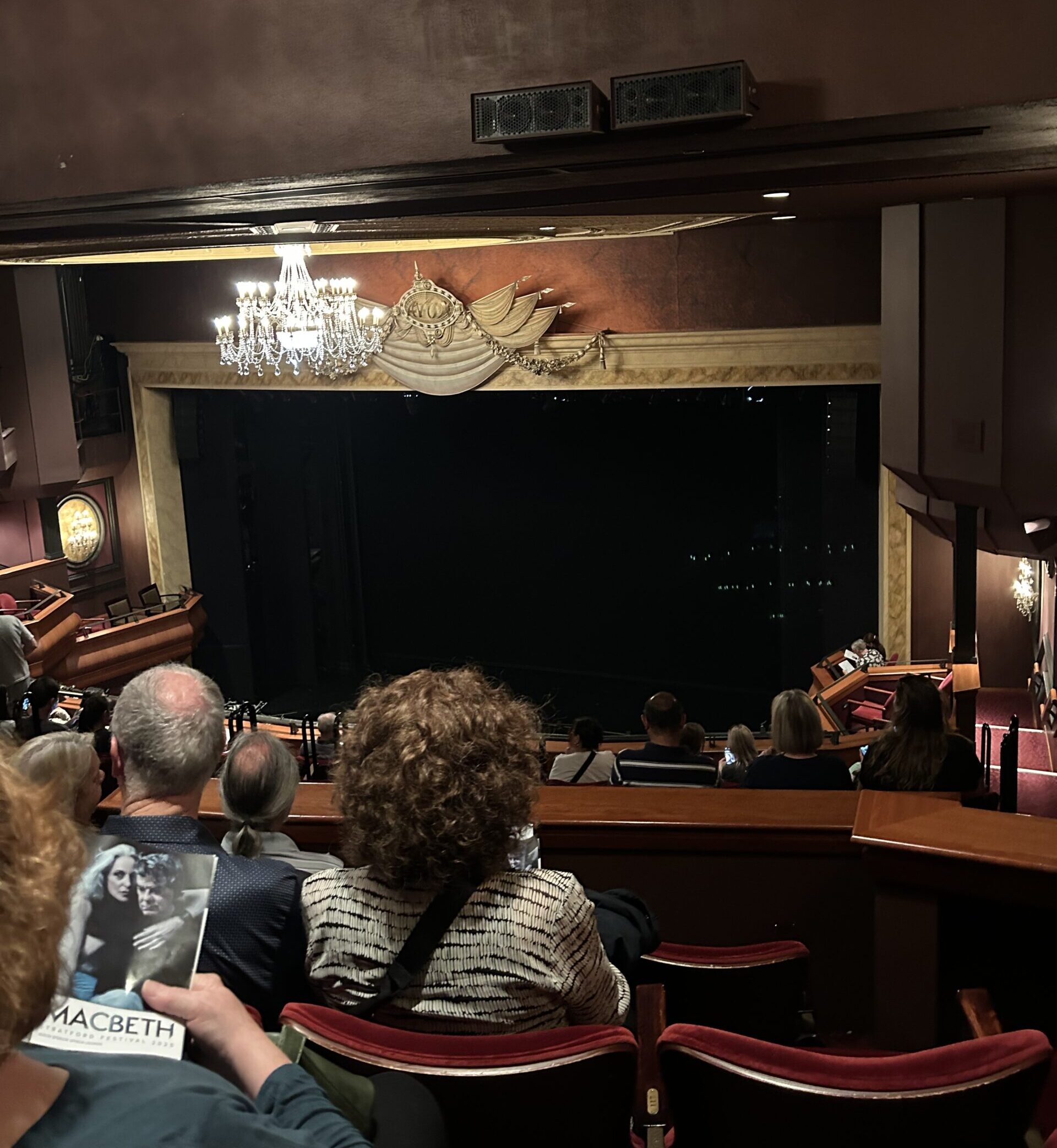
Why do we still read Shakespeare, and how did his work become so popular in Canada? Questions pondered by many, including myself.
The rich history of theatre in Canada begins quite simply – with connection and a basic desire to share stories, from traditional Indigenous storytelling to the establishment of a Shakespeare-based festival in Stratford, Ontario.
Only a two-hour drive from Toronto is a place that fosters endless creativity. It’s also a place that many people, like myself, didn’t even know existed. But it isn’t just a place for aspiring playwrights or actors – it’s for art lovers, thinkers, social critics, and those who enjoy a good story.
This renowned Stratford Festival has been running since 1953, producing Shakespeare, Jane Austen, and other literary classics, often with a creative twist. For the second year of the FNUniv and Stratford Festival partnership, Aaron Coutts-Smith and I were selected for this immersive experience. Our week-long experience included tours of the theatres, dress rehearsals, artist chats, and enjoying a variety of the 2025 season’s plays.
This season, the Scottish Play, Macbeth, is reimagined during the 1980s bike wars. It mirrors the emotions and tragic outcome with some unforgettable changes. Aaron and I couldn’t stop discussing how, although the production was drastically different, the essence of the tale was still captured. In Lucy Maud Montgomery’s beloved Anne of Green Gables, the audience is encouraged to recall their childlike imagination as the play envisions Anne’s future.
To the people who love listening to stories, who stayed up too late reading under their covers as children, and to those who desperately want to be understood: you have been understood for hundreds of years through the story. It took studying theatre for me to realize this and that emotion is a time machine. Perhaps we can’t comprehend the killing of a king, but we recognize Macbeth’s ambition and the guilt that often follows. We may not understand what it’s like to be an orphan, but we connect with Anne for her resilience and imagination. Once you move past the spectacular theatrical presentation, the deep, critical thoughts layered within the plays reveal that life is neither a clear-cut tragedy nor comedy and the blurring of that distinction is traced through the characters and their actions.
Theatre teaches that your life’s path isn’t always clear, and it doesn’t need to be. Aaron Coutts-Smith just finished a social work degree, and I am entering my third year in Anthropology. Through Tim Drake’s INA-English classes, both Aaron and I explored the vast possibilities of theatre and the importance of how the story relates to culture. Recognizing that a plethora of stories is always unfolding around us, we may be a secondary or minor character, but we are also always the protagonist in our own story. Theatre helps us navigate how stories move and change, whether with time or, perhaps, perspective. We are constantly weaving in and out of each other’s stories, and our time in Stratford was an extremely transformative scene in my story.
The community of Stratford works together as one to produce top-of-the-line Canadian theatre. Artists were everywhere – art was everywhere. From the carefully tended gardens to the breathtaking architecture of each theatre, particularly the Tom Patterson Theatre, which has won multiple architectural awards.
The passion for theatre, acting, playwriting, and art, in general, is infectious, whether it’s your first time visiting, as it was for Aaron and me, or for many lifelong theatre-goers who attend the festival yearly.
The trip taught me how collaborative the artistic process is, especially for a festival with such great respect. The unity needed to put on this festival is incredible and is only executed year after year because of pure passion. The synergistic cooperation between the directors, playwrights, actors, sound, lighting, costume, set, and community comes together in the spirited city of Stratford, creating a beautiful progression that forms a magical place of harmony.
Submitted by Student: Avery Berezowski, 2025